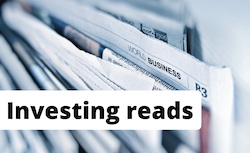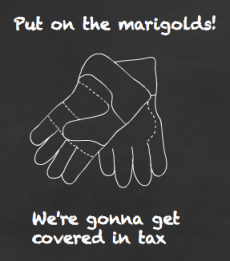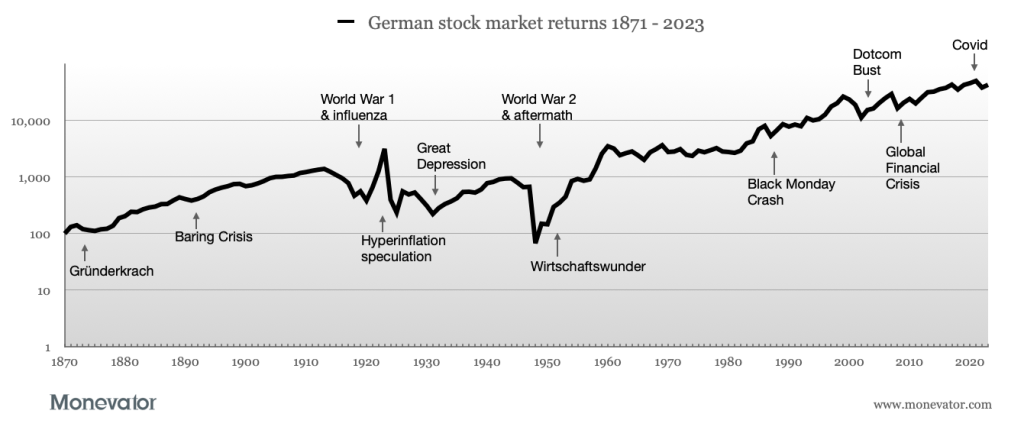
The tax year runs from 6 April to 5 April the next year. This means the most crucial UK tax deadline occurs in April.
That’s because there are various annual allowances and tax reliefs you need to make the best of to legally mitigate your income tax bill and to stop excessive taxes sapping your investment returns.
And most of these run on the basis of ‘use it or lose it’ by 5 April.
No good moping in June that you should have filled your 2023-2024 ISA allocation by 5 April, but you were too preoccupied by the Six Nations rugby!
No point cursing when you pay £500 in capital gains tax in July because you didn’t defuse it in March!
Of course you know this. You’re the sort who reads Monevator.
But it’s all too easy to overlook something.
We’re all only human. For now at least.
So while we wait for our A.I. overlords to steal this job from us too, here’s a checklist of what you need to think about as the UK tax deadline draws near.
Follow the links in each section to go deeper.
ISA allowance
The annual ISA allowance is the maximum amount of new money you can put each year into the range of tax-free savings and investment accounts that comprise the ISA family.
The ISA allowance for the current tax year to 5 April is £20,000.
You cannot carry forward or rollback this ISA allowance. What you don’t use in the tax year is lost forever.
ISAs are a superb vehicle for growing your wealth tax-free. But the rules are fiddly – seemingly made up by a bureaucrat with a grudge against mankind.
My co-blogger wrote the definitive guide to the ISA allowance.
The ISA allowance: how it works and how to use it
Pension contributions annual allowance
There is a limit to how much money you can contribute to your pension in a given tax year while still receiving tax relief on those contributions.
This is currently £60,000. It is sometimes referred to as the pension annual allowance.1
Saving into a pension is mostly a tax-deferral strategy. That’s because you’re eventually taxed on pension withdrawals, unlike money you take out of an ISA tax-free.
In theory this makes ISAs and pensions equivalent from the perspective of tax.
In practice though, the fact that you can also draw a special lump sum from your pension tax-free gives pensions an edge in tax-terms – albeit at the cost of locking away your money for years.
Weigh up the pros and cons of each tax wrapper. We think most people should do a bit of both.
You can reduce your marginal tax rate by making pension contributions, if you can afford to go without the money today. Those on higher rate tax bands in particular should do the maths.
The rich person’s guide to pension contributions
Personal savings allowance
Under the personal savings allowance:
Basic-rate taxpayers can earn £1,000 per year in savings interest without having to pay tax.
Higher-rate taxpayers can earn £500 per year.
Additional rate taxpayers don’t get any personal savings allowance.
Back when interest rates were very low, these savings allowances seemed quite generous.
But rising rates have changed everything. Even interest on unsheltered emergency funds might take you over the personal savings allowance and so see some of your interest being taxed.
Redo your sums. Higher rate tax payers might look into holding low-coupon short duration gilts instead. Recently these have offered a lower-taxed alternative to savings interest.
Why the personal savings allowance is suddenly important again
Dividend allowance
As of 6 April 2023, the annual tax-free dividend allowance was reduced to £1,000.
It’ll halve again from 6 April 2024 to £500 for the next tax year.
Dividends you receive within the tax-free dividend allowance are not taxed. But breach the allowance and you’ll pay a special dividend tax rate on the rest, according to your income tax band.
You can avoid the whole palaver by investing inside an ISA or pension.
Capital gains tax allowance
Everyone has an annual capital gains tax allowance, or ‘annual exempt amount’ in the lingo of HMRC.
This allowance is £6,000 until to 5 April 2024.
Alas the allowance will be halved to £3,000 from 6 April 2024. After that it will be frozen.
Capital gains tax is levied on the profits you make when you sell or transfer most assets. These assets include everything from shares and buy-to-let properties to antiques and gold bars.
You can shield your gains from capital gains tax by investing within ISAs and pensions. Go re-read the relevant bits above if you skimmed them!
EIS and VCT investments
You can also reduce your taxes by investing in Venture Capital Trusts (VCTs) and Enterprise Investment Schemes (EIS).
These vehicles are mostly marketed at wealthy high-earners for whom the large income tax breaks are attractive.
But be aware that these tax reliefs come with all kinds of risks, rules, and regulations.
VCTs
VCTs are venture capital funds run by professional managers who make investments into startup companies.
Somewhat quixotically, however, VCTs don’t even pretend to being trying to deliver high venture capital-style returns for investors.
Instead they aim to steadily return cash via tax-free dividends.
You can invest up to £200,000 a year into VCTs. You must hold them for at least five years to keep your 30% income tax relief.
Fund charges are invariably expensive, and the returns mostly mediocre – especially if you back out the tax reliefs.
EIS
EIS investing is even riskier. Qualifying companies are usually very young, and many investors buy into them via crowdfunding platforms rather than professional fund managers.
The quality of these EIS opportunities is extremely variable, and information usually scanty.
And while there have been a few big crowdfunded winners, the majority do poorly and often go to zero.
If you’re a captain of finance who buys Lamborghinis before breakfast, you may already know you can put up to £2m a year into EIS investments.
Again, you can knock off 30% of your EIS investment amount from your income tax bill – and there are other reliefs too should things go wrong.
You must hold EIS investments for three years to qualify for the tax relief.
Most people shouldn’t put more than fun money into EIS or even VCT schemes, in our opinion. Certainly not unless they’re very sophisticated investors or getting excellent financial advice.
The risks of Venture Capital Trusts
What are Enterprise Investment Schemes?
Check in on your tax band and personal allowances
The rate of income tax you pay depends on your total income from all sources. This includes salary, interest, dividends, pensions, property letting, and so on.
You add up all this income to get your total income figure.
You then subtract your personal allowance from the total to see which tax bracket you fit into.
Everyone starts with the same personal allowance, regardless of age:
For 2023/24, the personal allowance is £12,570.
Your personal allowance may be bigger if you qualify for Married Couple’s Allowance or Blind Person’s Allowance. But it’s smaller if your income is over £100,000.
For England, Wales, and Northern Ireland, the income bands after deducting allowances are currently:
Income Tax Rate
2023/2024
2024/2025
Starting rate for savings: 0%
£0-£5,000
£0- £5,000
Basic rate: 20%
£0- £37,700
£0- £37,700
Higher rate: 40%
£37,701-£125,140
£37,701-£125,140
Additional 45% rate
£125,141 and above
£125,141 and above
Source: HMRC
Note: If your non-savings taxable income is above the starting rate limit, then the starting savings rate does not apply to your savings income.
Scotland has its own income tax rates.
As we’ve seen above, there are further allowances and reliefs for income from certain sources – such as dividends and savings – that can reduce how much of that particular income is taxable.
You can also take steps such as making additional pension contributions or having a spouse hold certain assets to further reduce your taxable income or the highest rate of tax you pay.
UK tax brackets and personal allowances
Don’t make the UK tax deadline into a crisis
Scrambling around to exploit these allowances before the tax year ends is not only stressful – it’s also financially suboptimal.
If you had cash lying around that you might have put into an ISA earlier in the year, for example, then it could have been earning a tax-free return for months already.
But don’t blush too hard if you find yourself in this position.
Most of us are similar, which is why we wrote this article – and why the financial services industry bombards us with ISA promotions every March.
Try to automate your finances to invest smoothly and intentionally over the year.
And remember that April also brings warmer weather and longer days. Life is about for more than money and taxes!
Save and invest hard, take sensible steps to mitigate your tax bill, and enjoy life like a billionaire on whatever you’ve got leftover.
Very high-earners are subject to a much-fiddled with taper that reduces their allowance. It is reduced by £1 for every £2 someone earns over £260,000, including pension contributions.
The post UK tax deadline: how to make use of all your tax allowances appeared first on Monevator.



